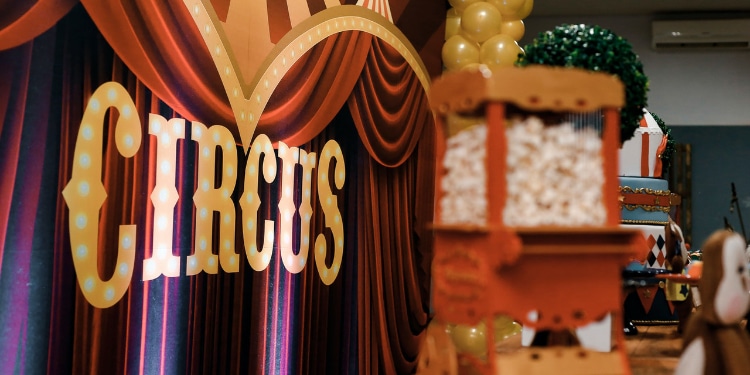











Automatonophobia is the fear of human-like figures, such as mannequins, wax figures, dummies, animatronics, or robots. Psychologists do not typically use this precise term but rather refer to this condition as a type of specific phobia, a category of anxiety disorders characterized by an irrational fear triggered by certain objects and situations. So, while the term automatonophobia may not be something that psychologists and mental health professionals specifically treat, the symptoms that come along with automatonophobia are treatable (Hamm, 2009).

While the phobia may seem unusual to many, it is actually not that uncommon to experience discomfort around human-like figures. The discomfort often arises from the lack of realistic human behavior in these figures, which can make them appear unsettling. The eerie feeling that some people experience when alone in a room with life-like dolls or mannequins has been the subject of many movies and TV shows. In fact, some become so distressed around these objects that it impairs their daily lives.
Automatonophobia is a specific phobia characterized by an irrational fear of human-like figures, such as wax figures, dolls, mannequins, robots, and other similar objects. The term “Automatonophobia” comes from the Greek words “autos” or “automatos” meaning self-acting and “phobos” meaning aversion or deep fear. According to the Diagnostic and Statistical Manual of Mental Disorders, Fifth Edition (DSM-5), specific phobias, including automatonophobia, affect approximately 12.5% of adults in the United States at some point in their lives. Approximately 19 million Americans experience one or more phobias, including specific phobias like automatonophobia (American Psychiatric Association, 2013).
No one really knows where specific phobias come from, and automatonophobia is no different. It is possible that horror movies and other media could exacerbate people’s fear of these inanimate human-looking objects (Garcia, 2017). They may also be the result of traumatic events that occurred involving human-like objects. Lastly, some people simply seem to be more genetically predisposed to anxiety disorders and specific phobias (Gottschalk & Domschke, 2017). Automatonophobia can also result in a persistent fear stemming from various environmental factors.
Whatever the cause, some people report experiencing excessive fear, anxiety attacks, and panic attacks when one of these human-like figures is present. The anxiety response is often triggered by the sight of human-like figures, leading to intense fear. Mental health professionals may diagnose you with the specific phobia of automatonophobia when the fear of human-looking figures causes you to avoid being in their presence and experience intense anxiety, like a panic attack or other forms of distress.
To meet the criteria, this fear must:
So, if you are not in regular contact with such figures, this fear may not meet the required criteria. However, if, for example, you work in a wax museum or a clothing store where there are real-life mannequins, this may impact your life significantly to the point that your symptoms could meet the criteria for a phobia.
Diagnosing automatonophobia involves a comprehensive evaluation by a mental health professional. As stated above, the diagnostic criteria for a specific phobia, as outlined in the DSM-5, include a persistent and excessive fear or anxiety about a specific object or situation, in this case, human-like figures. The fear must be irrational and cause significant distress or impairment in social, occupational, or other areas of functioning. A mental health professional will assess the individual’s symptoms, medical history, and mental health history to determine the presence of automatonophobia and rule out other mental health conditions.
If the symptoms of automatonophobia are causing you significant distress, seeking support from a mental health professional who treats phobias can help. It’s worth noting that mood disorders can coexist with specific phobias like automatonophobia. Cognitive behavioral therapy (CBT) is the main treatment that is used to improve symptoms of specific phobias like automatonophobia (Almeida et al., 2013). A therapist will help you understand how your thoughts, feelings, and behaviors are all correlated and how your fears are impacting your life.
Some therapists may choose exposure therapy for treatment, during which they will use gradual exposure to help you retrain your brain’s current fear responses to get to a place where you are not as debilitated from the sight of a human-looking object (Böhnlein et al., 2019). A trained professional will be able to assist in confronting and alleviating your fears. They will also teach coping skills to improve your quality of life.
While seeking professional help is essential for managing automatonophobia, there are several coping mechanisms and self-help strategies that can help individuals manage their symptoms. These include:
Like some other specific phobias, automatonophobia may sound strange to some people but can cause real distress to those who experience it. So while those experiencing it may find it embarrassing to admit it out loud or even to themselves, it should not be ignored. Treatment is readily available and effective. If you or someone you care about suffers from what appears to be automatonophobia, contact a licensed therapist who can help you overcome your phobia for a life free of this fear.
References